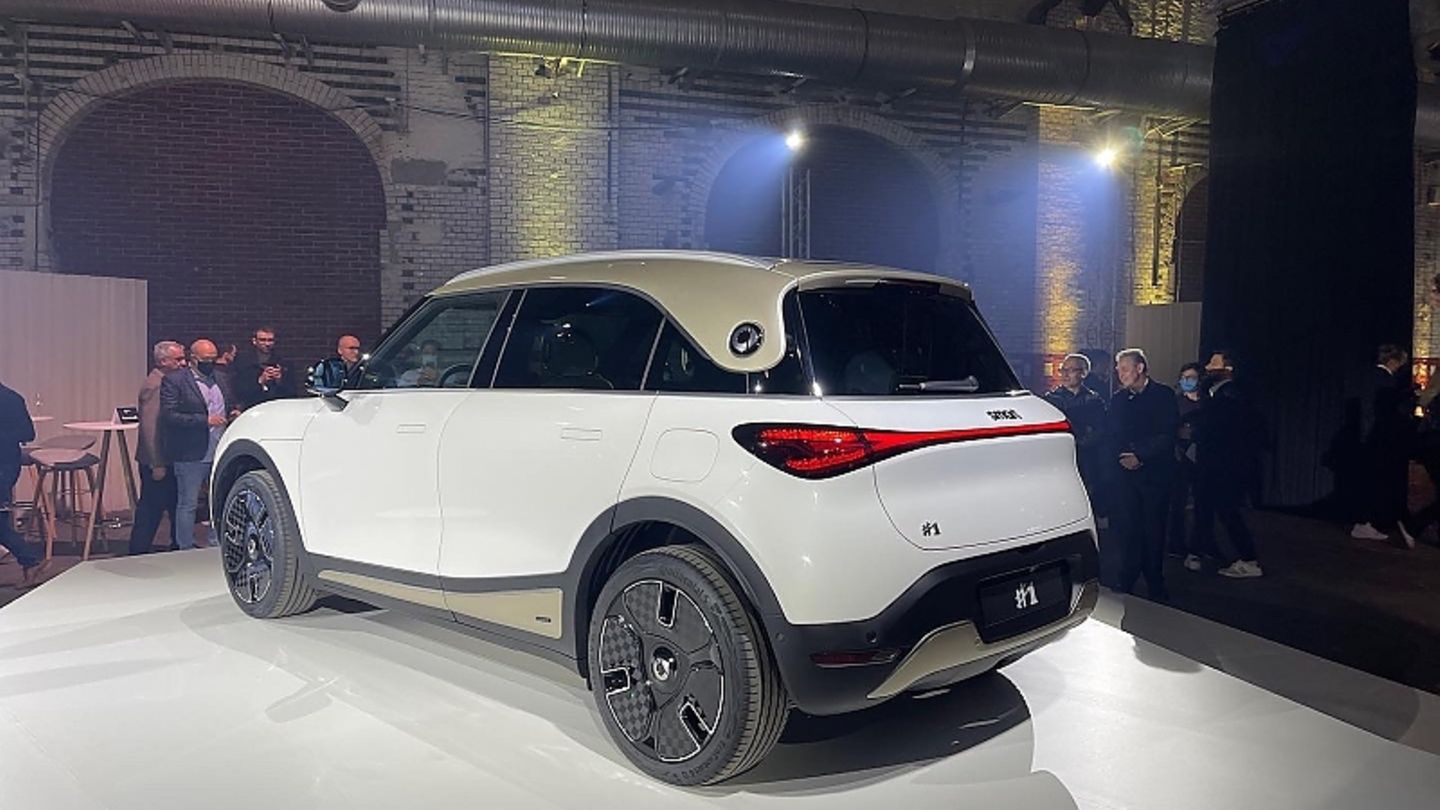Smart dares to start again with active support from China. The smart two-seater of yesteryear is a thing of the past. In the future, a completely new model family will do the job. The technology comes from Geely – the design from Mercedes.
So far, the Smart brand has been known in particular for the small, smart micro double-seaters, which somehow made everything different from the other car world. Originally conceived by Swatch founders Nicolas Hayek and Johann Thomforde as a mobility concept for inner cities, Smart was innovative, different and bold. But so far, none of the Smart generations has been able to earn money, and only the various Fortwo models were really different. The Forfour, first with Mitsubishi and then with Renault technology, never became real Smarties. The Smart Forall, a crossover with the characteristic Tridion safety cell that had been planned for decades, never materialized. Now it will become reality when the brand is restarted – with Geely technology and design from Sindelfingen.
The smart idea of yesteryear: A compact, small car that can be parked anywhere, is made up of easily exchangeable modules and is affordable for everyone. In addition, integrated into a mobility concept with Deutsche Bahn as a partner. Automotive companies as well as universities and visionaries have been working on such ideas since the 1970s. Such was the head of the watch manufacturer Swatch, Nicolas G. Hayek. He pursued his dream of a “Swatch-Mobile” vigorously, initially together with the VW group. But even then it turned out that ingenious and economical do not necessarily have to go together. VW withdrew from the project in 1994. But the enterprising Hayek quickly found a replacement: Daimler-Benz. The first study for a city car was assembled there in 1981/82: 2.5 meters long and created under the impression of the oil crisis and parked inner cities. However, because the box did not exactly meet the safety requirements, the draft was shelved. It was only ten years later that the Swabians took up the basic idea again and built two studies: the Eco Sprinter and the Eco Speedster. Hayek’s idea came at just the right time. Micro Compact Car AG was born, with headquarters in Biel, Switzerland, a production facility in Hambach, France, and a development center in Germany. A cooperation that also went horribly wrong. In any case, MCC has been 100 percent owned by Daimler since 1998.
In the same year and a whole series of studies later, the first Smart actually came: it was launched on the market in October 1998 – with body panels and a tridion safety cell made of high-strength steel. The other body parts were made of thermoplastic material. He was sold from multi-storey storage towers. All that is now forgotten – almost. Because the electric Smart Fortwo is still being produced in part of the building by the new off-road vehicle manufacturer Ineos, which has now taken over the former Smart factory in Hambach. However, the future of the brand lies neither in Germany nor in Alsace, but in China. The new model generation, introduced with the electric crossover called Smart #1, was developed by Geely and is also produced here. The 4.27 meter long #1 is just the debut of a whole family, which is of course purely electrically powered. “The world premiere of the Smart #1 in Berlin is a milestone in the incredible development phase we have found ourselves in since the brand refresh. As the first of a new generation of all-electric smart SUVs, the all-new Smart #1 is the perfect embodiment of this innovation,” said Tong Xiangbei, CEO of Smart Automobile. The market launch should be in the fourth quarter of 2022 – probably at prices of around 40,000 euros.
The extremely pleasing crossover is powered by an electric motor on the rear axle, which delivers 200 kW / 272 hp and a maximum torque of 343 Nm. The top speed is capped at 180 km/h and the 66 kWh battery in the underbody allows the Chinese to drive up to 440 kilometers with one electric charge. The maximum charging speed is 150 kW, which boosts the battery pack to up to 80 percent in half an hour. Inside, there is plenty of room for four people thanks to the 2.75 meter long wheelbase and a rear seat that can be moved by 13 centimeters. The cargo space has a capacity of 273 to 411 liters, with a small compartment under the front hood with a further 15 liters for charging cables and small items. The sober cockpit is dominated by two digital screens. Behind the wheel, the driver looks at a flat ten-inch display and in the center of the dashboard there is a 12.8-inch portrait display that can be used to operate all of the vehicle’s functions by touch or voice. The new Smart generation offers its occupants an avatar as a companion with AI-based voice control implemented in the 3D user interface.
Source: Stern
I am a 24-year-old writer and journalist who has been working in the news industry for the past two years. I write primarily about market news, so if you’re looking for insights into what’s going on in the stock market or economic indicators, you’ve come to the right place. I also dabble in writing articles on lifestyle trends and pop culture news.




